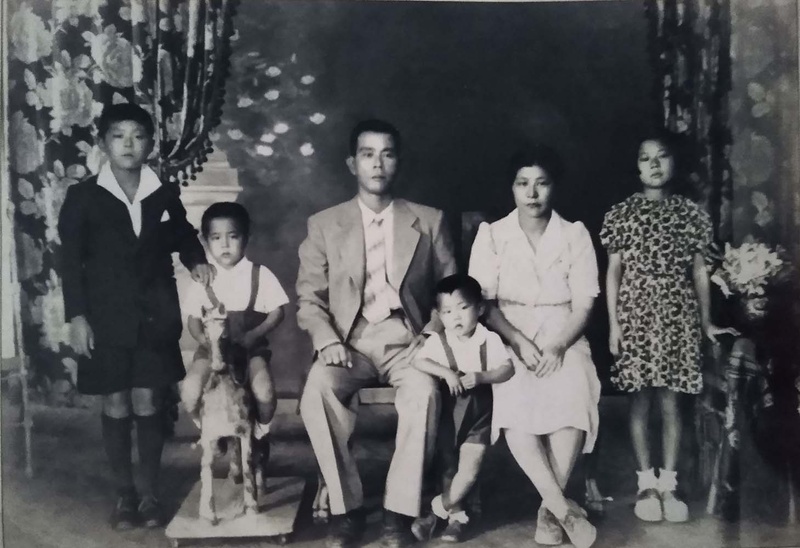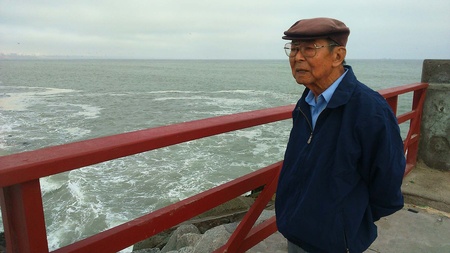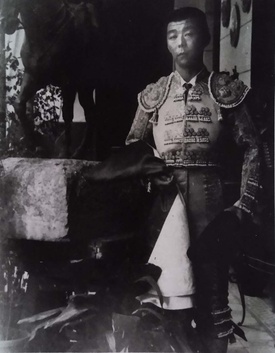“If you want to know something about the family, ask me. Take advantage,” my uncle, the bullfighter and journalist Mitsuya Higa (1932-2020), told me several years ago. He did it laughing, aware that he was in the last part of his life, with his head still full of memories and stories from 60, 70 years ago, and that—being the oldest of all—he was the only one in the family who possessed.
I remembered his invitation to delve into the family's history now that he has just left. With him has gone the family memory and, furthermore, an inhabitant of an era that we increasingly know more from books than from direct testimony: the prewar.
Every family—or most—has one member to whom the rest go to consult about the family tree or details about relatives. In the case of Nikkei families, with the Issei absent, people like Mitsuya—Nisei born before the war—are the main link with the past and the history of Japanese immigration to Peru.
The advantage of having a direct witness of an era is that they can tell you things that books don't tell you. For example, history texts extensively document the deportations of almost 1,800 Japanese and their descendants in Peru to the United States, but not—at least to my knowledge—how some immigrants did so after being captured to notify their families of their imminent deportation.
The trucks that transported the Japanese to the port of Callao to be shipped to the United States passed by Mitsuya's parents' store, a circumstance that some took advantage of to throw pieces of paper.
My uncle, then a child, would pick up the papers from the floor and hand them to his parents. What did they contain? The data of the deportees and their wives. Trapped and on the way to the ship, without the possibility of notifying their families, they waited for my uncle to help them. To the horror of the expulsion from the country, of the dispossession of everything they had managed to build in Peru, was added the anguish of not being able to contact their loved ones to say goodbye.
After receiving the papers, Mitsuya's parents contacted the wives of those captured to notify them of their deportation.
There were others who were able to go to the US with their families. One of them was Mitsuya's uncle, his father's older brother. He was deported with his wife and children, except for the eldest, who was already married. One of his children was a teenager, very close to Mitsuya. This cousin convinced him to travel with them to the USA, the land of cowboys that Mitsuya admired thanks to Hollywood movies. For my uncle, deportation was like an adventure to the Old West.
Mitsuya's parents gave him permission to travel to the US, but on the day of departure, with his suitcase and travel clothes ready, his mother backed down and prevented him from leaving. He cried and put up physical resistance. Finally, my uncle stayed in Peru without adventure.
The films from which his childhood heroes came came from an industry that also produced war films in which the Japanese were the enemies. My uncle used to tell me how after watching those movies he ends up hating them, thinking how evil they were. Later, other Nisei told me they had felt the same. They, like my uncle, were even minors. Even as adults they were aware of how effective the film industry had been in biasing them against the country of their ancestors.
Mitsuya also said that when he was a child he walked through the streets in a permanent state of alert, sticking to the walls, for fear of the people he passed and who out of nowhere would hit him, kick him or smack him for having a face. of Japanese.
The attacks even came from “respectable ladies.” My uncle could never forget a customer at the grocery store his parents owned in an upper-middle class district (before the 1940 earthquake that shook Lima). The woman caressed her head, in an apparently affectionate gesture, but before removing her hand she pulled forcefully on her hair. His parents did not see the abuse and he did not tell them anything. For Mitsuya, that white lady was racist.
Japanese immigration to Peru is full of small stories like the ones I just reviewed and that disappear when they are not shared, when their protagonists die and with them their stories, when we only focus on History (the one full of dates, names, lists of facts, etc.).
Small stories are also important because they allow us to get to know people better (those made of flesh and blood, not those who are an interchangeable part of the mass or statistics), their inner world, the private sphere of communities like the Peruvian-Japanese community.
Therefore, when people like my uncle Mitsuya leave, beyond the family loss, I feel that we lose a piece of the memory of our community. I have been able to rescue some of his stories, but there are others that he told me that I no longer remember—or that he did not tell me—and that have been lost forever.
Although he published many articles sharing his stories, he never wrote his memoirs. I remember that several times I suggested that he write a book about his life and that he always told me “now.” He never did. My mistake—I now realize—was not having taken the initiative to do extensive interviews and record them in order to transform them into a book. Now there are only fragments, scattered interviews, texts lost over several decades that will have to be searched.
It would be ideal for Nikkei families to collect the stories of their Mitsuyas, the repositories of family memory. Maybe some think that no matter how small they are, they are inconsequential, that a family's experiences are only of interest to their circle, but I believe that all stories, big or small, matter.
Behind History and its great protagonists, there are anonymous people who have also contributed to building it. The foundations of the Nikkei community were the work of thousands of Japanese immigrants whose names we do not know. Their silent work—in farms, bazaars, restaurants, hair salons, etc.—forged the group we are today.
They are no longer here, but their children are, and they are the link to our origins. Therefore, we must listen to their stories, record them and transmit them. Don't let them get lost, because every time one of them leaves—like Mitsuya—they disappear forever.
MOVIE FIGHTER
I only saw my uncle bullfighting once. I don't remember how old he was exactly—I think it was 68—but in any case he was close to 70. How did a quasi-septuagenarian dare to go out into the ring and face a bull? It was reckless, to say the least.
However, if there was one thing he had left over, it was determination. Nobody could dissuade him. Maybe there was also a certain unconsciousness, I don't know. If he was afraid, he hid it very well (I remember reading an article he wrote several decades ago in which he said something like that courage did not consist in not being afraid, but in having it and overcoming it).
Once we went to the cinema to see The Wrestler , the story of a wrestler (Mickey Rourke) in the twilight of his career, a man who refuses to leave the ring and cannot find his place in the world outside of them. I had already seen the movie. I had liked it a lot, I thought of my uncle and I figured he would enjoy it too, so I took him to see it. I think he didn't like it.
I thought he would feel reflected in that fighter who only seems to find meaning in his life in a ring, who risks everything to continue fighting, but it wasn't like that.
Who he did like was the boxer played by Hillary Swank in Million Dollar Baby . He loved that movie and I have always thought that he saw himself reflected in that tenacious fighter who overcomes the skepticism and prejudices of her coach (Clint Eastwood) - who refused to train her because she was a woman - and who, through effort and ferocious conviction makes its way into the world of boxing. Mitsuya, for his part, had to overcome the skepticism and prejudices of those who did not believe that a “Japanese” could be a bullfighter.
Another similarity: when he traveled to Spain to become a matador he was 30 years old (or almost). The boxer in Clint Eastwood's movie was over 30 when she started training at his gym. Despite being “old,” none of them gave up. Unyielding fighters, both made their dreams come true. She died young, but my uncle happily lived long enough to tell the tale.
© 2020 Enrique Higa








